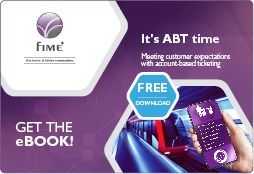Account-based ticketing, or ABT, is high on the transport industry’s agenda. It offers travellers choice and flexibility in the fare media they use – whether that be a smartphone, wearable, smartcard, a bank card… or a combination. Plus, with data hosted remotely, operators can realise several operational efficiencies and benefit from stacks of new data.
Sounds great, right? But for the transport agencies considering an ABT system, whether that integrates EMV® acceptance or not, several key considerations are required to ensure projects are secure, compliant with new standards and crucially, in-line with local market requirements. So, what should be top of the check list?
1. Security
Secure authentication is central to the successful implementation of ABT. With more data stored in the back office, transport agencies need to ensure they get to grips with industry standard cryptography from the start of projects to ensure systems are resilient to attacks from the get-go. A layered approach, integrating multiple technologies, is undoubtedly best practice.
2. Quality assurance
Championing quality throughout any significant infrastructure deployment or upgrade is fundamental to long-term success, operational soundness and traveller satisfaction. As each implementation raises unique integration and interoperability challenges, technical knowledge and guidance to select the best technology for solutions are key. Getting these first critical choices right not only ensure a positive launch but minimize challenges and repair costs in the future.
3. Standards, accreditations and compliance
Transport agencies must also take into consideration global and regional standards as for some, compliance is crucial. Other ticketing technologies such as Mifare, Calypso and the CIPURSE™ open standard can be utilized optionally as an advanced foundation for developing new projects, providing instant security and flexibility. Expert consultancy can help ensure agencies are up to date with the latest regulatory requirements, as well as decide whether additional standards or testing would add value to the project in question. Each market is unique, so a tailored, well-informed plan is important.
4. The right form factors, at the right time
One of the great benefits of ABT is that acceptance of multiple form factors can easily be integrated into solutions, including wearables, smartcards, EMV bank cards and smartphones. However, not every form factor is appropriate for every market. Transport agencies need to ensure that they are taking the needs of their customers into account to ensure a cost-effective and user-friendly solution. This may be scrutinizing the country’s level of contactless usage, the number of tourists utilizing the network or smartphone penetration.
5. EMV
With the success of Transport for London’s implementation, integrating EMV payment card acceptance is viewed by many transport agencies as the pièce de résistance. But the world of EMV is a complex unknown for transport agencies to master. Partnering with an expert in the payments world can help transport agencies navigate the multiple players, technologies, guidelines and testing requirements on the path to compliance and end certification.
Selecting a trusted compliance and digital transformation partner can ensure transport agencies develop a solution that’s not only secure and compliant technically, but one that best meets the needs of its travellers. With over twenty years’ experience in the payments and transport industry, FIME is supporting transport agencies to innovate in the new age of digital transport payments. From initial consultancy, training services with key industry partners all the way through to technical testing and certification support, FIME can support at any stage of your project.
